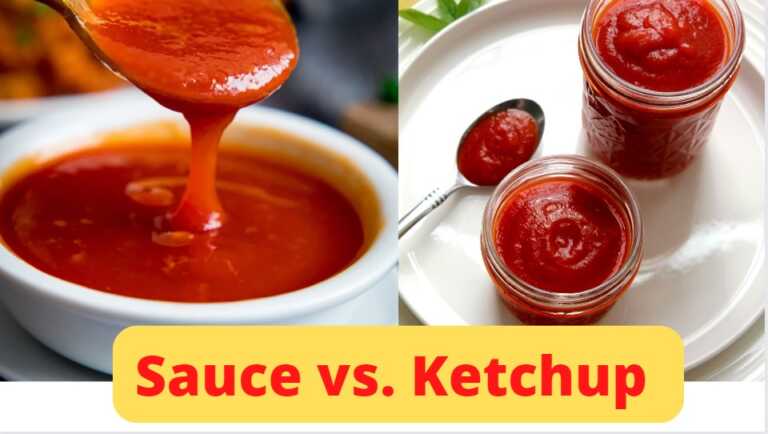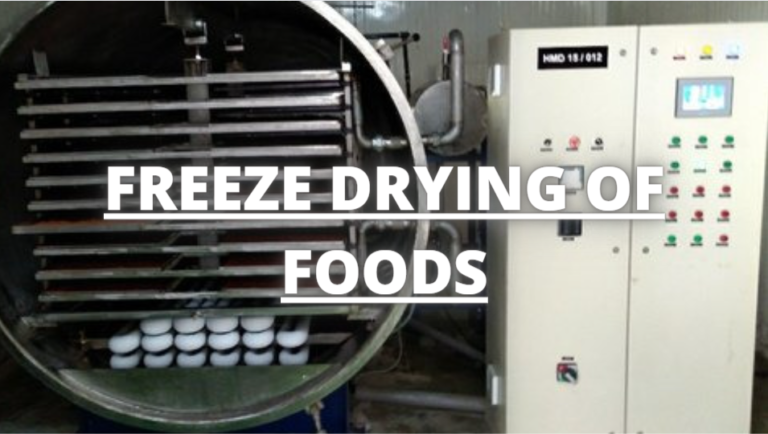PROCESSED FOODS AND CANCER
Life has become increasingly fast-paced in recent decades, with advancements in all aspects of living. This has also been reflected in the food we eat. Smaller families, double incomes, longer working hours with limited free time, and the desire for comfortable lifestyles have all contributed to the mushrooming of an industry providing off-the-shelf processed food. The food processing industry in India alone is worth 158.69 billion USD. According to the 2016 “Foresight” report, “sales of ultra-processed food and sugar-sweetened beverages are increasing, and this growth is almost entirely found in all countries.”
More specifically, when it comes to processed foods, have you ever wondered how they are classified? However, the subject is complex, with numerous types of processes that can bring both risks and benefits depending on the circumstances. Concerns about the health risks of industrial processing, diet quality, and chronic diseases have prompted the development of food classification systems that differentiate between different types of processed foods. However, the NOVA classification system has been widely used in research on food availability, diet quality, and health outcomes. NOVA divides food into four categories based on processing: 1) unprocessed and minimally processed foods, 2) processed culinary ingredients, 3) processed foods, and 4) “ultra-processed” foods.
These ultra-processed and processed foods are displacing unprocessed and minimally processed foods. WHO explains how it is happening around the world. The World Health Organization (WHO) recommends breastfeeding exclusively for the first six months after birth. Breastfeeding must be supplemented with a variety of adequate, safe, and nutrient-dense foods after six months. But, in recent times according to BPNI experts, milk powder and infant formula, have largely replaced exclusive breastfeeding. Drinks, infant cereals, chocolates, ice creams, chips, and other junk food replace fruits and vegetables, cereals and pulses, milk and milk products in later life. Then, the younger once never will have affinity for unprocessed and minimally processed food products.
This replacement is really affecting our lives. According to a 2019 study published in the British Medical Journal (BMJ), there may be a link between “ultra-processed” foods and cancer. The study defined ultra-processed foods as those lacking vitamins and fiber and high in sugar, fat, and salt. In several developed countries, they frequently account for up to half of daily energy intake. According to the BMJ study, a 10% increase in the proportion of ultra-processed foods in the diet was associated with a 12% risk of overall cancer and an 11% risk of breast cancer. These findings add to the growing body of evidence linking poor diet to obesity and cancer risk. Eating these foods, also known as a “Western type” diet, contributes to weight gain, overweight, obesity, and 12 specific cancers, with red or processed meat being linked to colorectal cancer.
Cancer is a significant global burden, with 14.1 million new cases diagnosed in 2012. According to the World Cancer Research Fund/American Institute for Cancer Research, changing one’s lifestyle could prevent one-third of the most common neoplasms. Figure clearly shows the increasing number of cancer deaths in men and women between 1975 and 2019.

The NutriNet-Santé study is an ongoing web-based cohort that began in France in 2009 with the goal of studying the associations between nutrition and health, as well as the determinants of dietary behaviors and nutritional status. Figure shown below depicts the distribution of ultra-processed food consumption in the study population. Sugary products (26%) and drinks (20%) were the main food groups contributing to ultra-processed food intake, followed by starchy foods and breakfast cereals (16%) and ultra-processed fruits and vegetables (16%). (15 percent)

During the four years of follow-up (426 362 person years, median follow-up time five years), 2228 new cases of cancer were diagnosed and validated, including 739 breast cancers (264 premenopausal, 475 postmenopausal), 281 prostate cancers, and 153 colorectal cancers.
According to WCRF research, there is strong evidence that:
• Aflatoxin-contaminated foods increase the risk of liver cancer.
• Salt-preserved foods (including non-starchy vegetables) increase the risk of stomach cancer.
• Taking high doses of beta-carotene supplements raises the risk of lung cancer (in people who smoke used to smoke tobacco)
• A higher glycemic load in the diet raises the risk of endometrial cancer.
According to research papers, certain processed foods and nutrients are directly carcinogenic. These are the following:
• MEAT:
• Meat consumption has been linked to an increased risk of digestive tract cancer. Consumption of red and white meat
• Meat that has been linked to an increased risk of colon cancer. Fish sauce consumption may be a risk factor for gastric cancer.
• BALANCED ENERGY:
• The relationship between body weight, BMI, or relative body weight and location.
• A specific cancer has been discovered to be positively associated with breast cancer.
• Endometrium, gallbladder, and kidney problems Physical inactivity, excessive energy consumption, and a large body. In both men and women, mass is associated with an increased risk of developing colon cancer.
• FAT:
• A high saturated fat intake leads to prostate cancer.
• PROTEIN:
• Increased meat consumption has been linked to an increased risk of colon cancer and with stage 4 prostate cancer
• ALCOHOL:
Alcohol plays a role in carcinogenesis, particularly in cancers of the mouth, pharynx, and throat esophagus. Alcohol has a greater effect on tissues that are directly exposed to it during the process. It tends to act synergistically with tobacco in terms of consumption. Beer consumption has been linked to a higher risk of colorectal cancer.
• NITRATES:
• Nitrates are found in a variety of foods, with vegetables and drinking being the primary dietary sources. Sodium and potassium nitrates are used in the salting, pickling, and curing processes. Tobacco and tobacco smoke contain nitrosamines. Nitrosamines, which are related to nitrates and nitrates are potent carcinogenic. Several properties of ultra-processed foods may be involved in the development of disease, particularly cancer. As a result of the Maillard reaction, neoformed contaminants with carcinogenic properties (such as acrylamide, heterocyclic amines, and polycyclic aromatic hydrocarbons) are present in heat-treated processed food products. Second, the packaging of ultra-processed foods may contain some materials in contact with food that have been linked to carcinogenic and endocrine disruptor properties, such as bisphenol. Finally, ultra-processed foods contain legal but contentious food additives such as sodium nitrite in processed meat or titanium dioxide (TiO2, white food pigment), which has been linked to carcinogenesis in animal or cellular models.
However, there are no adequate methods for determining, or even estimating, the magnitude of the cancer risk associated with a given level of human exposure to a substance known to be carcinogenic in animals. Furthermore, the cancer risk associated with specific food additives cannot generally be determined through epidemiological studies because their use is so widespread that reliable identification of unexposed controls would be impossible. There has been no requirement for most food additives to undergo carcinogenicity testing. Substances in this category include those “generally recognized as safe” (GRAS), hundreds of flavoring agents, most additives approved prior to the 1958 Food Additives Amendment (P.L. 85-929) to the Food, Drug, and Cosmetic Act (U.S. Congress, 1958), and additives used at FDA-approved low levels, with the exception of suspected carcinogens. Furthermore, little is known about the tumor-promoting activity of the few food ingredients tested for carcinogenicity (National Research Council, 1982).
Those additives found to be carcinogenic when administered orally to laboratory animals are generally prohibited from use. Long-term toxicological studies have revealed that certain unavoidable contaminants in foods, such as aflatoxin B1 and polychlorinated biphenyls are carcinogenic. Such contaminants are generally permitted in foods only up to the FDA’s determination of the lowest level generally achievable without causing severe economic losses or adverse effects on the food supply. Regulatory bodies will not approve an additive unless extensive testing has been performed and it has been demonstrated that no harmful effects from consumption are expected. To be approved, a chemical must demonstrate that it is safe, that there are good reasons to use it, that it will be used in the smallest amount possible, and that consumers will be clearly informed when it is added (through labeling). Regulatory bodies also establish the Acceptable Daily Intake (ADI) for each additive, which is the amount that can be consumed every day for the rest of one’s life without risk of harm. The ADI is calculated by reviewing available data and determining the lowest level at which no toxic effect is observed. The ADI contains a large safety factor, which means that the level at which no toxic effect is observed is multiplied, often by more than 100, to produce the ADI.
Age, family history, viruses and bacteria, lifestyle (behaviors), and contact with (touching, eating, drinking, or breathing) harmful substances are all risk factors for cancer. Americans use over 100,000 chemicals, and approximately 1,000 new chemicals are introduced each year. These chemicals can be found in foods, personal care products, packaging, prescription drugs, and household and lawn care products.
While some chemicals can be harmful, not all contact with chemicals is dangerous to your health. Some factors that increase your risk of developing cancer include behaviors such as smoking, heavy alcohol consumption, on-the-job exposure to chemicals, radiation and sun exposure, and some viruses and bacteria. When all these risks are considered together, the role of chemical exposures in causing cancer is small and, as of now, not very clear. Scientists know very little about how much contact with most chemicals causes cancer.
As a result, limiting our consumption of ultra-processed foods and focusing more on unprocessed and minimally processed foods, processed culinary ingredients, and processed foods will undoubtedly save us from cancer. Further studies are needed to better understand the relative effect of the various dimensions of processing (nutritional composition, food additives, contact materials and neoformed contaminants) in association with carcinogenic properties.
References:
National nutritional week: What is NOVA classification of Food and How it can help in Making An Informed Choice? Article written by Aastha Ahuja, published 2 years ago on September 4, 2020
Cancer statistics, 2022- Siegel-2022- CA: A Cancer journal for clinicians
Cancer myth: Food additives and cancer article IN Vol.94.2007, Lyon: International Agency for research on Cancer
Food additives, contaminants, Carcinogens and Mutagens published by National Academies Press (US), Washington (DC).
Chemicals, cancer and you booklet by ATSDR National Research council, 1982.
The Link Between Processed Foods and Cancer by Karen Pasquazzi, RD, CSO, and LDN published on August 12, 2019.
Red meat, processed meat and cancer by Cancer Council NSW Highly Processed Foods Tied to Higher Cancer Risk by Steven Reinberg published on Feb.14, 2018
Consumption of ultra-processed foods and cancer risk: results from NutriNet-Santé prospective cohort by BMJ published 14 February 2018.
Junk, processed Food and Cancer: Link Decoded posted by Parul Raizada on 4 February 2022
What is ultra-processed food and should we be worried about it? Published on WCRF by Dr.Helen Croker on 24 March 2022
A powerful tool to strengthen our understanding of the evidence in nutrition and cancer by Marina Plyta published on 26 May 2022 WCRF
Whole grains, vegetables, fruit and cancer risk article at WCRF
Vitamins, minerals and other nutrients and cancer risk article at WCRF
Cancer notes by Dr. Meena Kumari, AMITY University published on January 2020



Processed Foods and Cancer